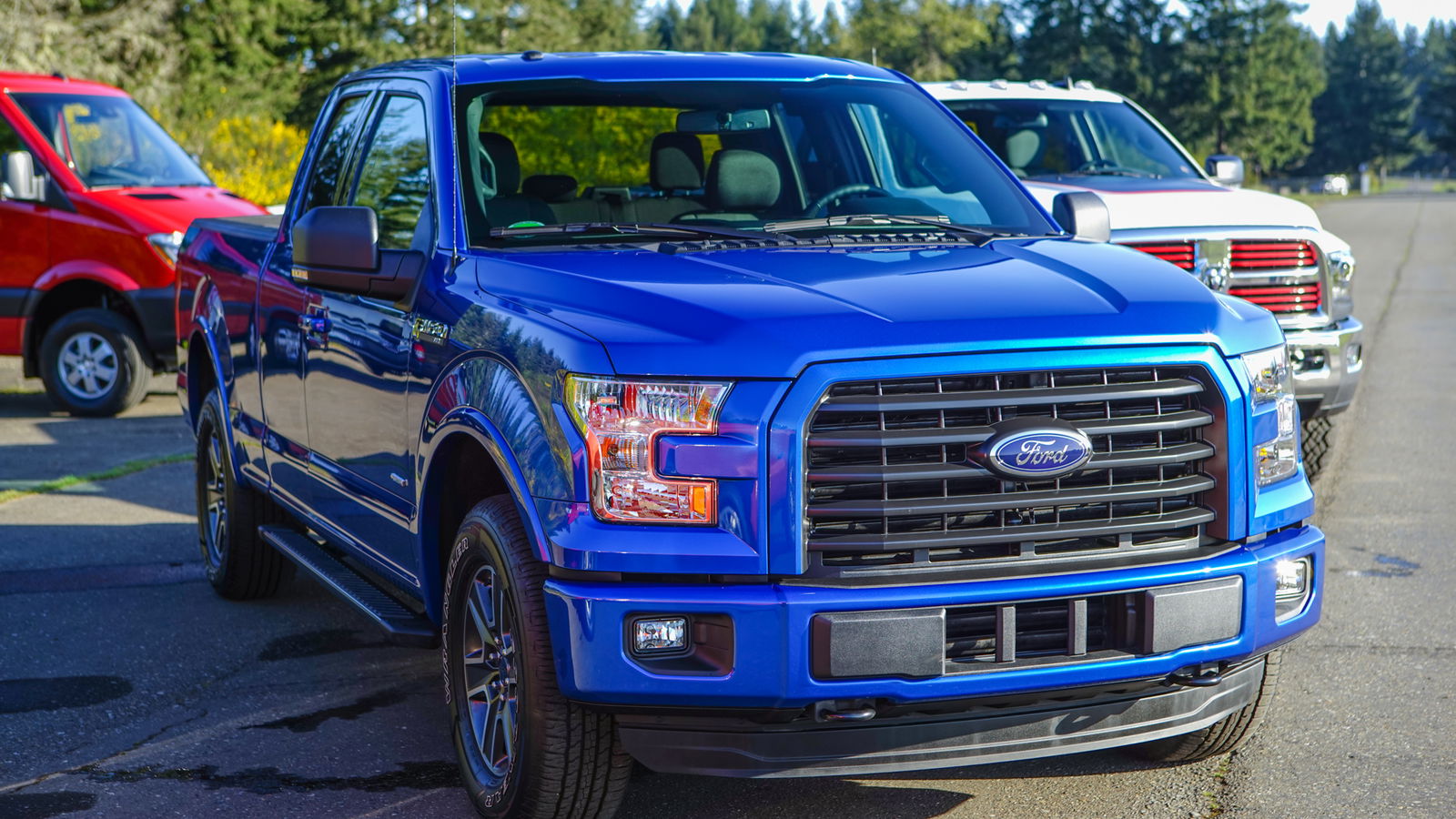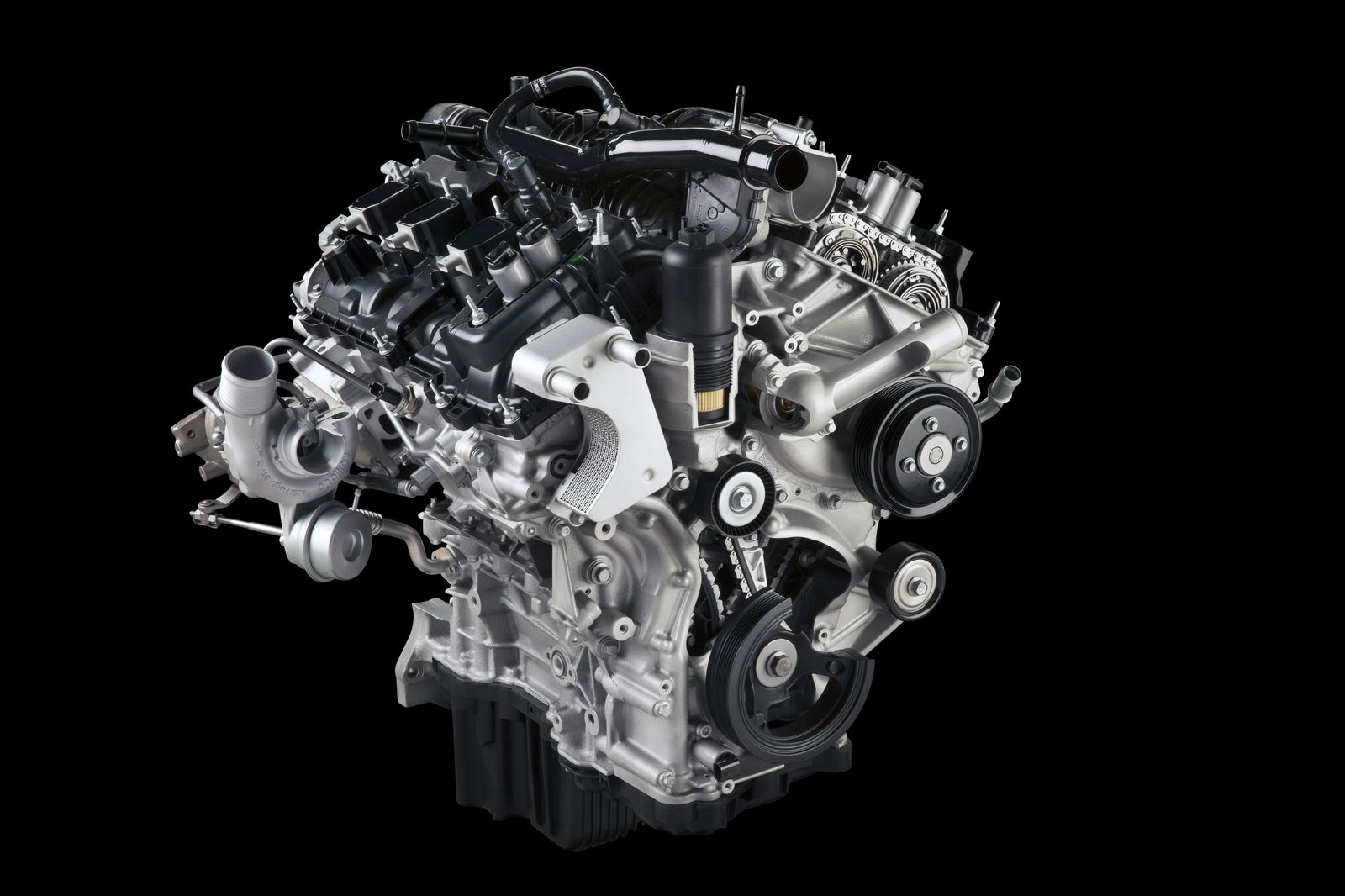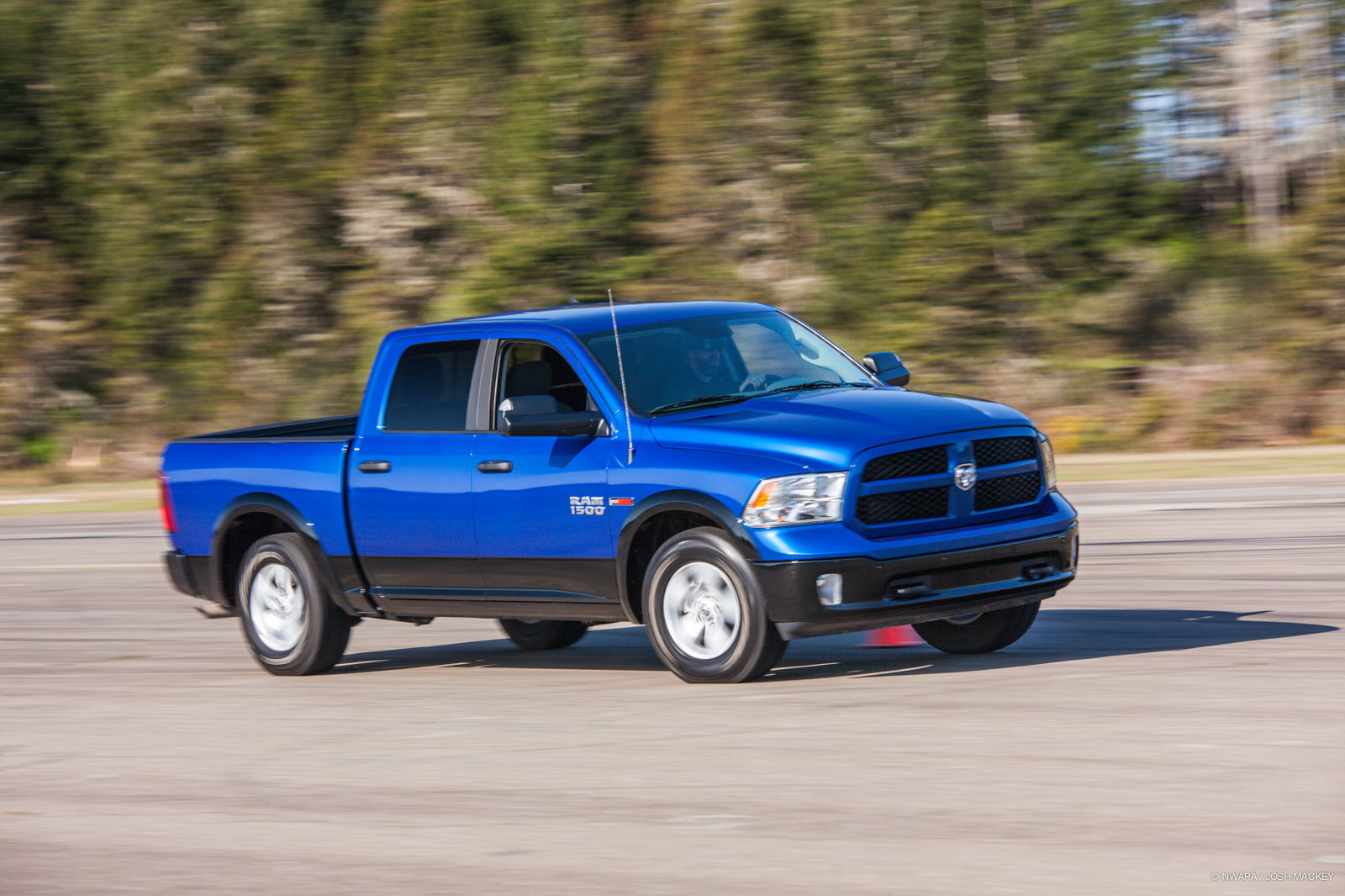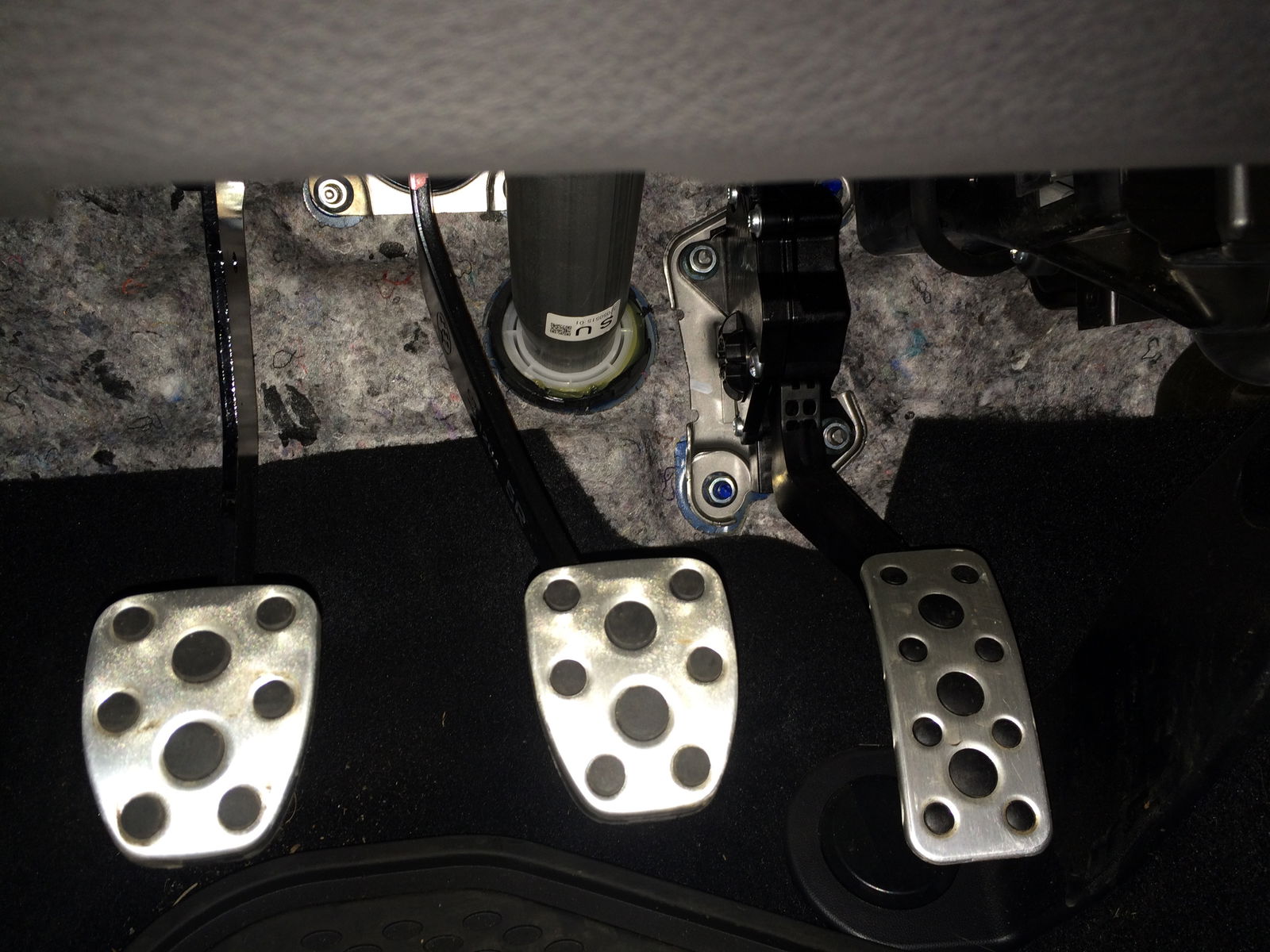Engineering Explained: Ford F-150 vs Ram 1500

If you’re not stuck in 2005 (perhaps craving the next American Idol episode), you’ll know efficiency standards are always getting more stringent. So how does the next batch of eco trucks from Ford and Ram fair? Let’s compare a few things:
1. Specifications
Starting with a numerical side-by-side, let’s see how these rigs stack up against one another:
| Specifications (As Tested) | 2015 Ford F-150 4x4 EcoBoost | 2015 Ram 1500 4x4 EcoDiesel |
| Engine | 2.7L Gasoline V6 | 3.0L Diesel V6 |
| Horsepower | 325 @ 5750 RPM | 240 @ 3600 RPM |
| Torque (lb-ft) | 375 @ 3000 RPM | 420 @ 2000 RPM |
| Transmission | 6-speed Automatic | 8-speed Automatic |
| Curb Weight | 2133kg | 2545kg |
| Ground Clearance | 9.4 in | 9.9 in |
| Approach Angle | 25.5 degrees | 23.9 degrees |
| Departure Angle | 26.0 degrees | 22.1 degrees |
| Ramp Breakover Angle | 21.0 degrees | 18.8 degrees |
| Payload Capacity | 789kg | 540kg |
| Towing Capacity | 3791kg | 3515kg |
| Fuel Economy (City/Hwy) | 18/23 mpg (19/26 2WD) | 19/27 mpg (21/29 2WD) |
| MSRP As Tested | $43,460.00 | $50,790.00 |
2. Engineering Strategy
Based on the numbers above, there are distinct design strategies used by the manufacturers. For efficiency purposes, Ford chose to go with a lightweight truck paired to a low-displacement turbocharged engine. These factors go hand-in-hand; through the use of an aluminium body, the F-150 weighs as much as 317kg less than previous generations, making a larger engine not quite as necessary.
Depending on the trim level, the F-150 also has the highest towing and payload among full-size pickups: 5533kg and 1497kg, respectively. Also, according to Ford, 90 per cent of light duty truck users will find the capability requirements met with the 2.7-litre turbo. To keep things in check on loose surfaces, features include electronic 4x4 shift-on-fly, hill start assist, and 9.4 inches of ground clearance as standard.

Ram’s strategy is rather unique as well. They’ve managed 10 per cent better fuel economy than the F-150 with a vehicle that weighs nearly 20 per cent more. The focus for efficiency remains purely on the drivetrain. Turbocharged diesels offer significant thermal efficiency improvements over gasoline counterparts.
This is a result of numerous factors: more long-chain hydrocarbons, significantly higher compression ratios, common-rail fuel injection, reduced induction pumping losses, and the ability to use variable geometry turbochargers without melting the rotating turbine vanes.
Also aiding in efficiency is an eight-speed automatic transmission, allowing the engine to stay within the desired power band more precisely. Finally, the 1500 spent significant time getting blown around in a wind tunnel; according to Ram this resulted in best in class aerodynamics with a drag coefficient of 0.36. As a comparison, that’s about the same drag coefficient as my 2014 Subaru STI; great for a truck, quite poor for a car.
For off-road capabilities, features include an anti-spin differential rear axle, transfer case skid plate, front suspension skid plate, an electronic transfer case, and four-corner air suspension.

3. How Do They Drive?
On road, the Ford F-150 felt surprisingly refined. Largely due to the low weight body through the use of aluminium, acceleration was strong, and it didn’t feel like a fishing boat going through the slalom. The ride and steering was quite well composed, offering a more responsive on-road experience than the Ram.
Off-road, the blue oval felt a bit more rigid, passing more vibration to the driver, especially through the steering wheel versus the Ram resting on air-bags. Is it capable? Certainly. Plenty of clearance and suspension travel, 4WD, high approach and departure angles, and the right set of tires will allow this truck to keep up well with anything on the beaten trail, so long as its shear size doesn’t impede manoeuvring around obstacles. The experience was just a bit more stiff than the 1500: better on-road, not as comfy off. Check out the video below for the full review:
Driving the Ram on-road was somewhat underwhelming. The heavy body offered plenty of roll and understeer on a slalom, and wasn’t exactly quick flat-out. Cabin noise was low, however, and it certainly was comfortable to drive and ride in.
Off the beaten path, the Outdoorsman was unbothered by the rather amateur off-road course offered to northwest journalists. No issues of wheel slip in the rather flat muddy environment, and the steering felt noticeably more precise and controlled than on pavement.
Impressively, the instantaneous fuel economy gauge was actively reading around 30mpg (US) while I puttered around at about 10 mph in the woods. Overall it was comfortable and efficient, though a bit detached for the driver. Check out the video below for more detail:
Which would I pick? The Ram was more comfortable, more efficient, and felt better controlled off-road, and for that it has my vote. That said, if I were primarily using the truck on-road or for towing a trailer/boat/camper, the Ford makes a compelling argument as it handles asphalt exceptionally.

Comments